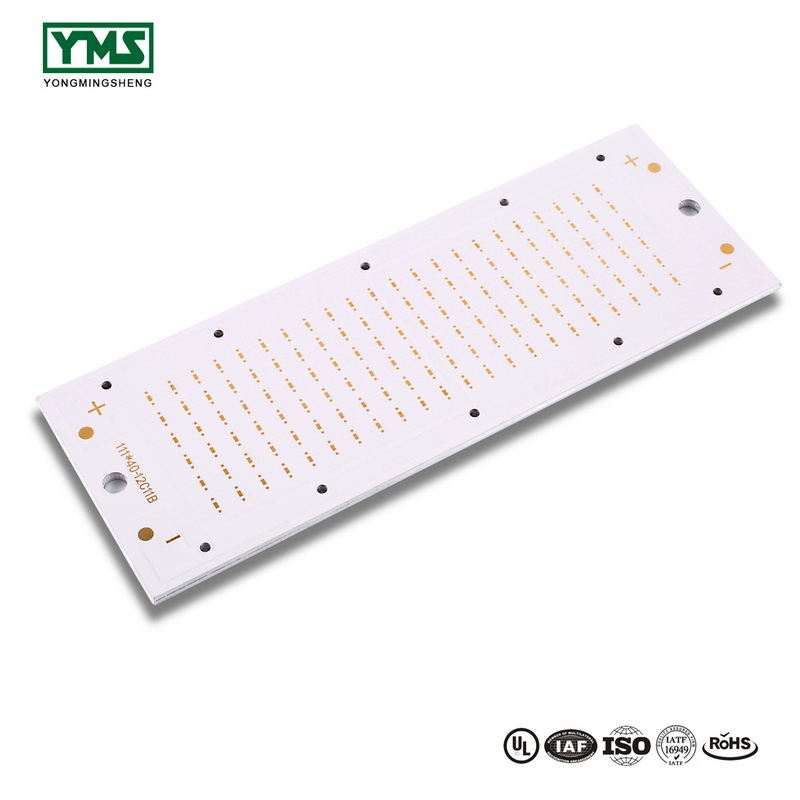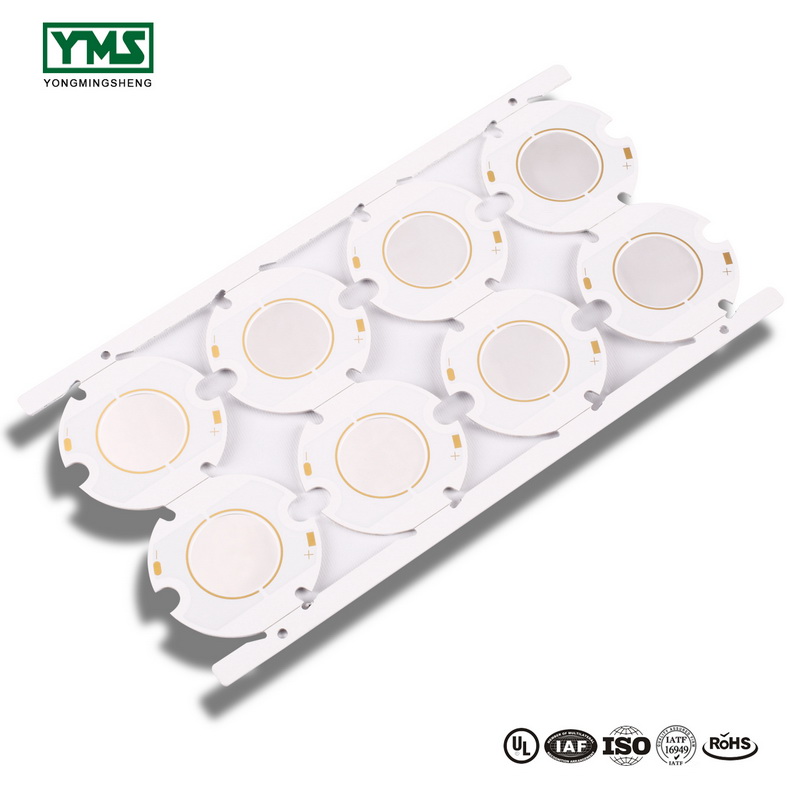Construction characteristics and operation instructions of aluminum PCB | YMSPCB
What are the structural characteristics of aluminum base board
Common knowledge of aluminum base board construction? I believe that most consumers are not very familiar with this question. As they are not familiar with LED aluminum baes board, Chinese PCB manufacturers will introduce some common knowledge of aluminum substrate construction in detail in this article.
We all know, for example, aluminum board is the first from the original data of metal materials, and on the surface of it is installed on many routes, and first part of the aluminum board is divided into data of copper foil used for heat conduction and the effect of insulation layer and metal substrate, and its structure can be divided into three different layers:
The first layer: it is what we generally call LED aluminum base circuit board, its effect is equivalent to the PCB circuit board made of copper material we often see, and the circuit board on it also needs to cover a layer of copper foil, but the thickness of copper foil also has a certain scale, generally before 1-10oz.
The second layer: is lagging, it is the first from the original data of insulation material, so in addition to the insulation effect but also has insulation and prevent the effect of heat conduction, the thickness of insulating layer also has a certain scale, is typically between 0.075mm to 0.15mm, and it chooses the produce of the skill is through national UL certification of core skills.
The third layer: that is the bottom layer, that is, we generally said the metal substrate, its primary data is the selection of aluminum data, some PCB manufacturers can also choose brass data as the production of metal substrate.
LED aluminum PCB instructions
1. In the process of drilling, punching, cutting and other mechanical processing of aluminum substrate, be careful not to break or contaminate the insulation thermal conductivity layer close to the conductor.
2. With the rapid development of electronic industry, for the completion of processing PCB smoothness requirement also more and more high, bending, distortion and smoothness of aluminium base board used by shearing, cutting machining tools such as the influence of the structure and quality and due to the circuit layer, insulating heat conduction layer and metal base effect caused by the different expansion coefficient between.
The effect is determined by the ratio between the thickness of the conductive layer (copper foil) and the metal base layer (aluminum plate), the greater the ratio, the greater the bending degree.
If the thickness of the copper foil is less than 10% of the thickness of the metal base layer, the metal base layer (aluminum plate) will dominate the mechanical properties, and the flatness of the PCB is satisfactory.
If the thickness of the copper foil exceeds 10% of the thickness of the metal base layer, the PCB structure will bend.
3. Due to the difference in expansion coefficient between circuit layer (copper foil) and metal base layer, PCB aluminum baes board always has a certain degree of bending.
The degree of bending also depends on the amount of copper retained on the PCB board and the width of the line. If the line is narrow enough, the stress caused by the expansion coefficient will be absorbed in the insulation thermal layer.
4. The higher the power density of the module, the better the thermal conductivity of the required aluminum baes board and the lower the thermal resistance;
5. The thickness of conductive layer (copper foil) of aluminum base board should increase with the increase of current carrying capacity;
6. A minimum insulation barrier must be maintained between the edge of the circuit board (or a hole in the circuit board) and the nearest conductor, generally with a material thickness of +0.5mm;
7. The breakdown voltage of aluminum base board insulation should meet the requirements of electrical insulation performance of modules.

